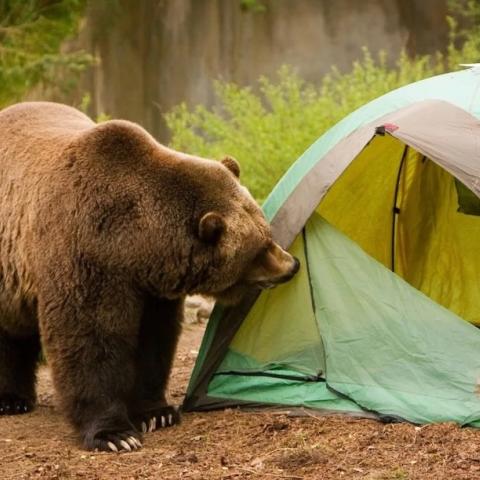
Very high fire danger has returned to Grand Teton National Park/NPS file
Very high fire danger has returned to Grand Teton National Park and the Bridger-Teton National Forest in Wyoming.
Smoke from fires both inside Wyoming and from surrounding states at times was filling the national park and prompting advisories that "unusually sensitive" individuals should consider reducing outdoor activities.
Teton Interagency Fire managers have elevated the fire danger rating for the area to “Very High.” When the fire danger is "Very High," fires can start easily from most causes and may spread rapidly with quick increase in intensity right after ignition, a park release said. Small fires can quickly become large fires and exhibit extreme fire intensity, such as long-distance spotting [spotting is when embers are caught by winds and transported ahead of the main fire.--Ed.]. These fires can be difficult to control and can often become much larger and longer lasting.
"Last week, six human-caused fires were reported on the Bridger-Teton National Forest," the release said Thursday. "These fires, all from abandoned warming fires, have ranged in size from ½ acre to 4.5 acres. Luckily, all these fires have been extinguished thanks to the vigilance of public reporting and firefighters patrolling the Forest. Fire managers are urging recreationists to use extreme caution with fire."
Two large fires were burning in the national forest to the southeast of Grand Teton. The Pack Trail Fire and the Fish Creek Fire combined covered roughly 44,000 acres. While the Fish Creek Fire was 95 percent contained Thursday, the neighboring Pack Trail Fire was less than 50 percent contained.

Smoke from wildfires has blanketed Grand Teton National Park at times. This photo was taken Friday, September 27, 2024/Kurt Repanshek
During the fall, frost kills summer grasses and vegetation, creating more light, cured fuels to carry fire, the park release explained. Larger fuels remain dry throughout the season, and winds become a major driver for fires. Additionally, with fall, comes the arrival of hunting season. People hunting and recreating on public lands will want to have warming fires and campfires with the cooler overnight temperatures, the release added. Public land users can help prevent wildfires by choosing to not have a fire at all and instead dress for success with multiple layers and warm clothing.
Unseasonably warm daytime temperatures and very dry conditions are predicted to continue over the weekend and into next week with periods of increased wind and no forecasted rain.
Fire managers advise recreationists to use extreme caution if choosing to build and maintain a campfire. In areas where campfires are allowed, fires should never be left unattended and must be completely extinguished before leaving. If choosing to have a campfire, keep it small and have a plan for putting it out before lighting it. All recreationists should have a shovel on hand and a water bucket ready for use. Soak, stir, feel, repeat. Make sure your campfire is “dead out” and cold to the touch before leaving. If it's too hot to touch, it's too hot to leave!
To date, 68 campfires have been abandoned or left unattended in the Teton Interagency Dispatch area. Unattended or abandoned campfires and warming fires can quickly escape and become wildfires, and recreationists can be held liable for suppression costs.




 Support Essential Coverage of Essential Places
Support Essential Coverage of Essential Places







Add comment